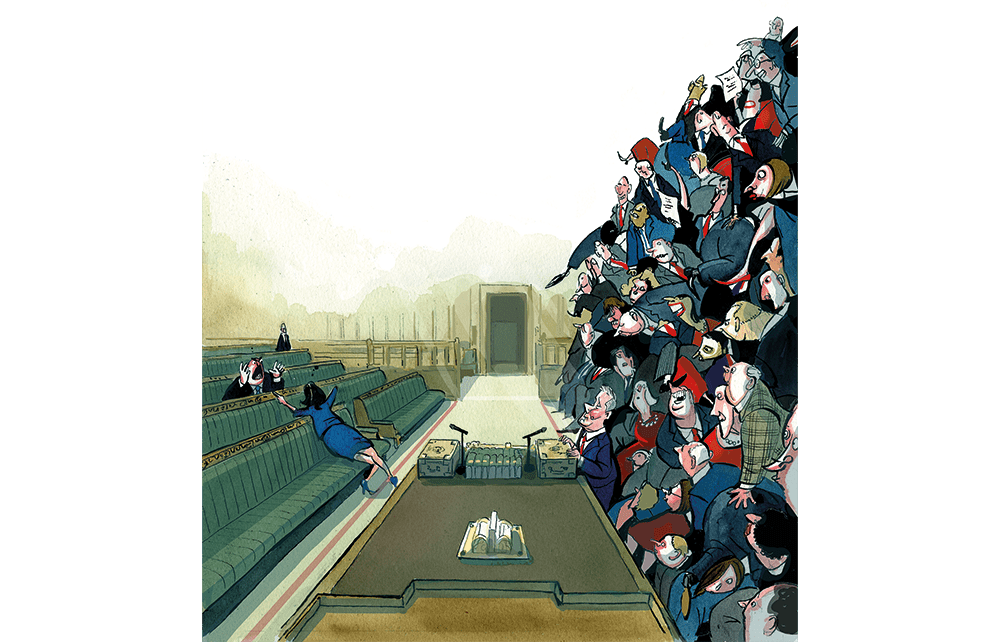When the last Tory government fell, the famous question after election night was: ‘Were you up for Portillo?’ Were you awake in the small hours when the man many expected to be the next leader lost his seat?
This year, there’s no shortage of big beasts likely to be turfed out by the electorate. Jeremy Hunt, Jacob Rees-Mogg and Grant Shapps are just some of those tipped to lose their seats. Many touted as potential leaders – Penny Mordaunt, Miriam Cates and James Cleverly – are also endangered. If current polls are to be believed, the Tories could be reduced to a rump of about 100 MPs and Keir Starmer will be sitting with one of the largest majorities in parliamentary history.
Tories fear that the BBC and other broadcasters will treat them as a fringe party
The word ‘landslide’ doesn’t quite capture the scale of it. Tony Blair had a majority of 179 MPs in 1997, the biggest since 1931. According to a recent Survation MRP poll, Starmer is on course for a 286-seat majority, which would mean his MPs occupy about three quarters of the Commons. The 100-odd Tories and 60-odd Liberal Democrats and SNP MPs will be there to ask questions, but they’re unlikely to present much of a serious threat to Starmer. The more important opposition would be likely to come from his own ranks. Starmer would be managing one of the biggest cohorts of backbenchers any prime minister has had to deal with: about 300 in all.
Tory MPs are beginning to believe that this horror show is possible. Comparisons are being made with the 1993 Canadian general election, in which the Conservatives lost 154 of their 156 MPs. Tories fear that the BBC and other broadcasters will treat them as a fringe party.
In this scenario the Labour party would in effect be both the government and the opposition.








Comments
Join the debate for just £1 a month
Be part of the conversation with other Spectator readers by getting your first three months for £3.
UNLOCK ACCESS Just £1 a monthAlready a subscriber? Log in